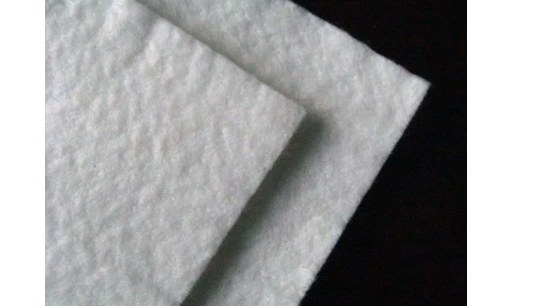- Understanding the Role of Geomembrane Liners in Waste Management
- Innovations in Geomembrane Liners for Water Management
- Geomembrane Liners: A Comprehensive Guide
- The Future of Geomembrane Liners in Civil Engineering
- Geomembrane Liners: Enhancing Landfill Stability
Manager:
WhatsApp:+86 177 0135 2670
Tel:+86 177 0135 2670
Email:marketing@okorder.com
Address:3rd Floor, No.2 Building, No.1 Sanlihe Road
Unearthing the Treasures of Geotextile Fabric at Home Depot: A Homeowner's Journey
There is something magical about walking through the aisles of Home Depot with the fragrance of fresh sawn wood mingling with new beginnings. These aisles are where homeowners and dreamers alike go to find the materials that will turn their visions into reality. On this shelf, a great but simple friend in the world of home improvement projects await—geotextile fabric home depot. This fabric is more than just material; it can be referred to as an unsung hero for many successful landscaping and construction jobs done out there. Let’s go on a journey to unearth geotextile fabric treasures as well as how it can enhance your next household project.

The Unsung Hero: Geotextile Fabric Home Depot
Geotextile fabric from Home Depot is synthetic permeable textile designed to work in synergy with soil. It is actually a special kind of cloth that is very strong, meant to mix with earth under foot. Made from robust synthetic materials like polypropylene and polyester, Geotextiles do not get wet, do not decay by chemicals or even age, hence they become suitable for outdoor use.
A Gardener's Dream: Landscaping and Weed Control
For gardeners and green thumbs, geotextile fabric simply sounds too good to be true. It is often employed as landscape cloth for blocking weeds while still allowing air plus water reach roots of plants. This double action maintains healthy plant growth by depriving light sought by weeds’ sprouting but does not interfere with natural characteristics of soil. Whenever you intend to set up a flower bed or perhaps lay a garden path, then geotextiles could be laid on since the best foundation layer which would offer beautiful landscapes without weed.
Protecting Our Green Spaces: Erosion Control and Ground Cover
Geotextiles help to maintain our green spaces by controlling erosion in places where soil loss by wind or water is common. They stabilize the ground, thus promoting vegetation growth and maintaining land integrity. As a result, they form a protective cover for the soil which prevents erosion and displacement from occurring due to water running off or changes in weather conditions. This essential function is important for sustaining the beauty and good health of our gardens, hillsides and banks along rivers.
The Plumber of the Plant World: Drainage Systems
In plants, good drainage is as vital as in homes’ plumbing systems. Geotextile fabric assists in creating highly efficient drainage systems that keep excess water away from fields while preventing waterlogging and making sure plants are supplied with enough moisture. Water passes through it but soils particles are sieved out; hence allowing free flow of water through drains without blockages on them and ensuring strong root systems.
Strengthening the Foundation: Soil Stabilization
Geotextile fabric has a great influence on soil stabilization since it restrains soil erosion while retaining its structure plus fertility. With such geotextiles holding onto dirt, nutrients cannot be easily washed away thus providing stable diet around crops which leads to healthy crop growth all year round thereby preserving fertility of lands over long periods.
The Many Benefits of Geotextile Fabric
There are many reasons why one should use a geotextile fabric. They are tough enough to meet harsh environmental conditions; besides they have been proven to be cost effective when used on mega projects (Cooper 42). Unlike other types of fabrics, geotextiles do not pollute natural environment but rather help conserve resources by protecting soils as well as conserving waters within ecosystems around them.
Installation: A Step-by-Step Guide
For geotextile fabric to work as it should, it has to be installed correctly. First of all, you need to prepare the site by clearing it from any debris and leveling the ground. Unroll your fabric smoothly (avoiding wrinkles or folds) and fasten its sides with special staples or pins. If well taken care of, its lifespan will last for a long time.
Woven and Non-Woven: Choosing the Right Fabric
When you visit Home Depot store, there are two main categories of geotextile fabrics namely woven and non-woven. woven geotextiles are known for their strength and durability making them ideal for projects with high tensile strength demands while Nonwovens appear more like felts and are categorized by weight, thereby providing permeability as well as versatility in terms of drainage and filtration.
Conclusion: A Practical Partner for Home Improvement
To sum up, geotextile fabric home depot is a practical partner that augments homeowners’ intentions in their home improvement undertakings. This material can be used for different purposes because it is versatile, environmentally friendly, durable among other advantages such as landscaping and erosion control right up to drainage systems or soil stabilization etc. Planning your next project; keep this in mind – often success lies at the margins – details matter; however small they might seem but make your geotextile fabric can make that difference.
At next time you go for shopping at Home Depot consider what treasures lie there disguised as geotextile fabric. With the correct kind of material available transforming your house into garden will be quite easy since it will look good though many people would prefer to use those which perform better instead. Therefore let us raise our glasses on the inconspicuous heroes of household enhancements-geotextile materials that silently yet powerfully support our ambitions at every moment.
- Previous:Geotextile Fabric Non-Woven: The Subtleness of its Power in Modern Infrastructure
- Next:Geotextile Filter Fabric: The Unnoticed Hero in Construction and Landscaping






